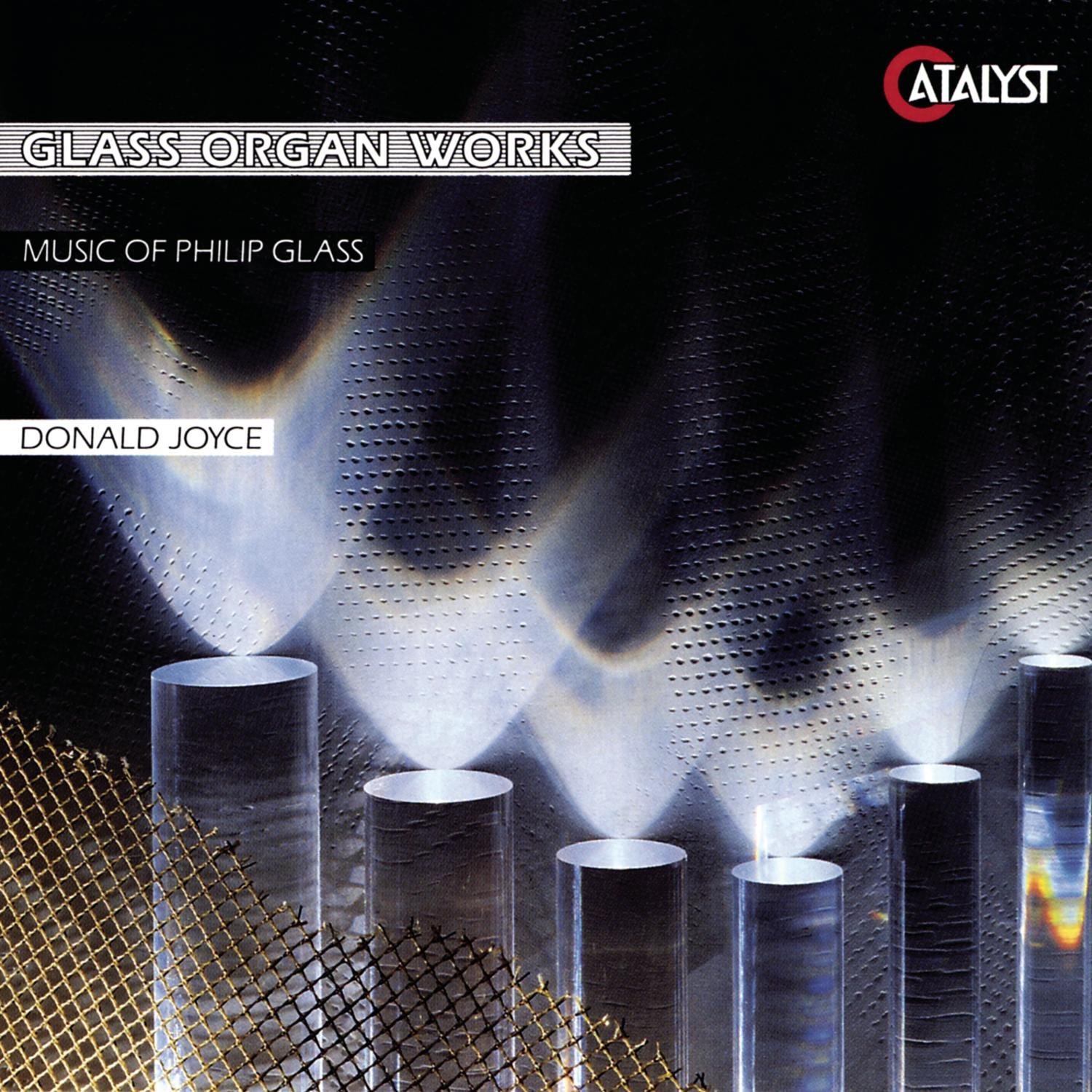
Info
Donald Joyce, Organ
Catalog
Tracks
2 Mad Rush 10:40
3 Dance No. 2 24:25
4 Contrary Motion 12:07
5 Satyagraha (Act III conclusion, arr. Michael Riesman) 9:25
Notes
For all the formal clarity and near-mathematical rigor of his aesthetic, Philip Glass is on some fundamental level a neo-Romantic, owing at least as much to Richard Wagner as to such acknowledged influences as Virgil Thomson and John Cage. Indeed, I found myself thinking about Glass during a performance of Wagner’s Das Rheingold at the Metropolitan Opera. Much has been made of Wagner’s harmonic restlessness — of the way that the chromaticism of a work like, say.
Tristan und Isolde leads directly to what has been dubbed the “atonality” of Arnold Schoenberg and his myriad disciples. But what is likely to fascinate a 1990s listener about Das Rheingold is just the opposite quality: the opera’s unprecedented harmonic stasis, the manner in which it explores the droning, inner life of sustained chords, from the three amazing opening minutes of pure E-flat major through the churning affirmation of the Gods, Valhalla, and the eternal D-flat major at the end.
Having heard the prefigurations of Minimalism in the music of Wagner, when I first met with Donald Joyce I asked him to approach Glass’s organ music with an open mind, and to see whether he, too, thought that there were Wagnerian dimensions in these scores. Joyce answered me most eloquently, with the present recording. In these works Glass is reconciled not only with Wagner but with an entire genre of compositions for the organ — with the works of César Franck, Charles-Marie Widor, Louis Vierne, Marcel Dupré, and the early Olivier Messiaen— music full of fancy, color, high Romanticism, and grand opportunities fora creative organist. (One of Glass’s early teachers was the great French pedagogue Nadia Boulanger, who knew most of these composers personally.)
Dance No. 4 and Dance No. 2 come from a larger 1979 work created with the choreographer Lucinda Childs and the artist Sol LeWitt entitled, appropriately “Dance.” Dance No. 4 is a particularly ecstatic study of a reiterated 6/4 chord that leads back inevitably to the key of A major; Dance No. 2 is an extended composition in chiaroscuro built around a C major chord.
Mad Rush, which exists in versions for both piano and organ, dates from the late 1970s; it might be described as a meditation in seven mercurial sections, alternately serene and stormy. By far the earliest and most austere of the works recorded here is Contrary Motion. Composed in 1969, it is one of a series of “process pieces” Glass wrote while developing his mature style. The expanding rhythmic figure upon which the whole composition is constructed could in theory continue augmenting forever.
The finale from Glass’s opera Satyagraha (1980) has been transcribed and arranged by Michael Riesman, a composer, conductor, and long-time keyboard player for the Philip Glass Ensemble. This highly original aria is sung by the character of Gandhi. Essentially tracing an unadorned Phrygian mode repeated in groups of three against a background of subtly shifting harmonics, it brings the long and beautiful opera to a proportionate close.
— Tim Page
In these organ pieces the friction between rapid keyboard figurations and harmonic stasis often approaches the combustion point. The constant and occasionally irregular punctuation of the organ’s drone is like the action of miniature valves that release energy in minute, highly charged cells. If one keeps Dance No. 4 and Dance No. 2 in mind this image is particularly useful in describing the workings of the magnificent Collegedale organ. It should not be forgotten that the organ is a wind instrument, operated by keyboards and a pedalboard. The wind supply of the Collegedale organ, while abundant, is also flexible, enveloping the sounds with a palpable shimmer. The entire organ breathes in response to every gesture from the hands and feet; pulse is a real and immediate function of the fingers depressing and releasing the keys. In turn, Glass’s rhythms take on a powerful, magical physicality.
The organ’s divisions, individual groups of pipes controlled by separate keyboards, speak from different parts of the mammoth oak case, a resonating chamber that unites them all into a monumental ensemble that shares the two large bellows for wind. Furthermore, the acoustics of the room in which the organ is contained allow the sound of the individual choruses to develop and blend. In this ideal situation -beautiful pipes splendidly voiced, sensitive key action, a robust but flexible wind, a lively but clear acoustic— Glass’s organ music tellingly comes to life.
— Donal Joyce
Credits
Executive Producer: Tim Page. Producer: André Gauthier for Pilot Music. Recorded 13-15 April 1993 on the Anton Heiller Memorial Organ. Engineers: Anthony Salvatore, Phil Gitomer, Sean McClintock. Organ Maintenance: Richards, Fowkes & Co.
Art Director: Abie Sussman. Cover photo: Chip Forelli.
© 1993 BMG Music.
Buy
Related
Dance Nos. 1-5
Satyagraha
Mad Rush
Music in Contrary Motion
RECORDINGS:
Dance Nos. 1-5 on Sony Masterworks
Satyagraha on Sony Masterworks
Solo Piano on Sony Masterworks
Two Pages / Contrary Motion / Music In Fifths / Music In Similar Motion on Nonesuch
